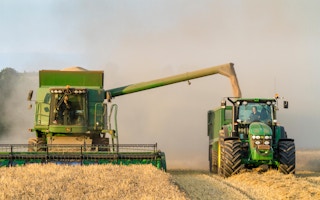The COVID-19 pandemic and the war in Ukraine have caused commodity prices to soar in recent years, severely undermining global food security. Now, global food prices are down from the peaks of a year ago, but no one should be complacent: the world’s food woes are far from over. The risk of additional price volatility remains high.
With Russian President Vladimir Putin’s annulment of the Black Sea Grain Initiative and attacks on export infrastructure in Ukraine, grain prices have ticked upward again. But dysfunctional food markets are the long-term risk. Wheat remains more than twice as expensive as it was before the pandemic. Moreover, food-price inflation is still running above 5 per cent in most developing countries, and as high as 30 per cent in Rwanda and Egypt. Another global food-price spike is likely.
The real problem is that the growing market power of major agribusiness firms is raising the risk that extreme food-price swings will become the norm.
Consider the fertiliser sector. The tripling of fertiliser prices in 2020-22 – which drove up food prices – was partly fueled by higher costs for nitrogen fertiliser, which reflected the rising price of natural gas. But new data from GRAIN/IATP show that leading firms hiked fertiliser prices well beyond what was needed to cover increased production costs, increasing their operating profits to 36 per cent, even as they sold less product. The resulting profit ratios were three times higher than before the Ukraine war began, and well above the 13 per cent average posted by S&P 500 firms.
Global grain traders have similarly been able to translate tighter supplies into record profits. In mid-2022, grain multinational Archer-Daniels-Midland (ADM) recorded its highest-ever quarterly profits. Its rival Cargill also banked record profits, with total revenues soaring by 23 per cent.
Such profiteering is made possible by growing corporate concentration in the food and fertiliser sectors. ADM and Cargill are two of the four “ABCD” firms – along with Bunge and Dreyfus – that control an estimated 70-90 per cent of the world grain market. Just four firms account for 75 per cent of nitrogen-fertiliser production in the United States, and 72 per cent of the potash-fertiliser market globally.
Through decades of mergers and acquisitions, such firms have been able to expand their influence up and down the supply chain, while amassing huge amounts of market data. Now, a proposed US$34 billion merger between Bunge and Viterra – the grain arm of the commodity giant Glencore – would mean further concentration of soybean and canola processing and distribution across the Americas.
Leading agribusiness firms enjoy huge supply-management and price-setting power, akin to the role of OPEC in oil markets. And they are not afraid to use it: previous episodes of market turbulence – in the 1970s and in 2008-11 – also led to higher profits in the fertiliser and grain-trading sectors. In a 2021 filing to US regulators, Nutrien, the world’s largest fertiliser company, admitted that its “higher selling prices more than offset higher raw-material costs and lower sales volume.”
For the world’s poor, who spend as much as 60 per cent of their incomes on food, every percentage point of food-price inflation can be devastating. Skyrocketing import costs for food and fertilisers are also one reason why many low- and middle-income countries are now facing their worst debt crisis in 60 years.
Farmers, meanwhile, are mostly unable to benefit from soaring food prices, largely because the costs of inputs – supplied largely by major firms with huge market power – are rising even faster than commodity prices. With farmgate prices now plummeting, and debt rising (owing to interest-rate hikes), many farmers are struggling to stay afloat.
As Russia’s actions in Ukraine prompt wheat futures to surge again, it has become clear that food prices can spike without warning. There is little doubt that more shocks will come. The consequences are likely to be compounded if a few companies still hold such inordinate power over the world’s food systems. That is why governments must act to change incentives before the next crisis arrives.
Compelling calls have been made to tax agribusinesses’ windfall profits and re-invest the funds in climate-resilient food systems. Government scrutiny of fertiliser price-gouging – as farmers’ groups have demanded – is also needed, along with stronger enforcement of competition policies to curb excessive mergers and acquisitions. Governments need to consider doing what for decades they have been reluctant to do – stepping in to break up monopolies.
The Bunge-Viterra merger offers an ideal opportunity to assess what kind of consolidation is really in the public interest and to send a clear message: profiteering from food crises will no longer be tolerated.
www.project-syndicate.org



















